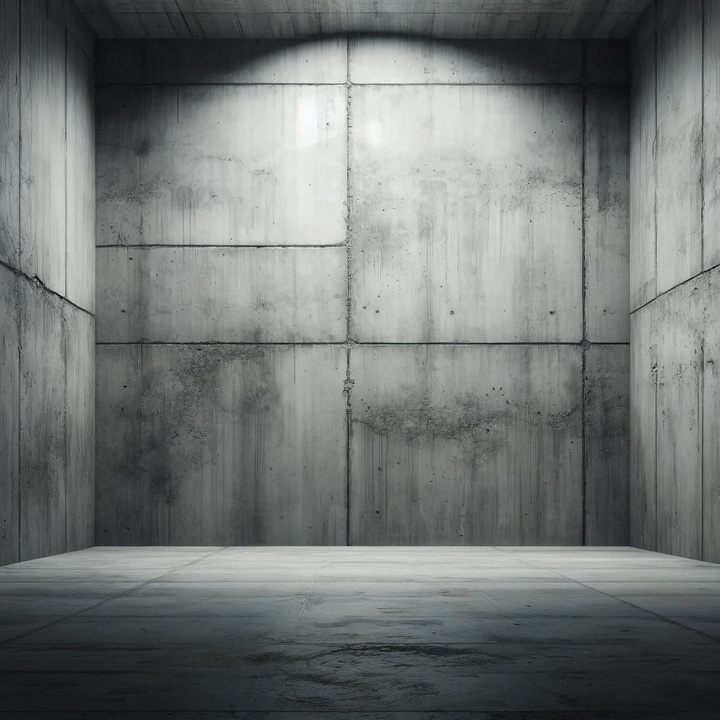Just as you protect your skin from harmful UV rays, your house from burglars, and your car from theft, you should also safeguard your home from the potential damage caused by basement moisture.
It’s not merely a matter of preventing unsightly damp patches or avoiding that musty smell. Left unchecked, basement moisture can lead to severe structural damage, resulting in costly repairs and even health issues due to mold growth.
Proactive basement waterproofing offers a shield, a protective barrier that defends your home against these dangers. But how does one go about implementing these preventive measures effectively? We’ll explore that next.
Key Takeaways
- Identifying sources of moisture is crucial before waterproofing.
- Proactive waterproofing shields against mold and mildew growth.
- Assess the severity of water issues to choose suitable waterproofing solutions.
- Regular maintenance is essential to prevent moisture-related issues.
Understanding Basement Moisture Issues
Grasping the root of basement moisture issues is crucial before embarking on any waterproofing project. You see, identifying moisture sources is a key step in the process. You’ve got to figure out where all that water’s coming from. Is it seeping in through cracks in the foundation or walls? Or is it condensation from your heating and cooling systems? Maybe you’ve got a leaky pipe somewhere. Once you’ve found the source, you’re halfway there.
But why is this so important? Well, simple; moisture in your basement can lead to mold growth. And if you’re not aware, the consequences of mold growth aren’t something you want to deal with. Not only can it damage your property, but it can also have serious health impacts. Allergies, respiratory issues, and even toxic mold syndrome can result from prolonged exposure.
Importance of Proactive Waterproofing
To safeguard your home and health, it’s crucial to be proactive with your basement waterproofing efforts. This isn’t just about avoiding the inconvenience of a damp basement; it’s about reaping the tangible and intangible Waterproofing Benefits that go beyond mere moisture prevention.
- Health Protection: Moist basements can lead to mold and mildew growth, posing serious health risks for you and your family. Proactive waterproofing eliminates this concern.
- Home Value Preservation: A dry, well-maintained basement enhances your property’s value. It’s an Investment Return you can’t afford to ignore.
- Energy Efficiency: Waterproofing your basement can reduce energy costs. It can prevent cold air from entering in the winter and hot air in the summer, making your home more energy-efficient.
- Damage Prevention: Water damage can lead to costly repairs. Proactive waterproofing helps you avoid these unnecessary expenses.
Selecting the Right Waterproofing Solution
Choosing the right waterproofing solution for your basement often hinges on understanding your home’s unique needs and the various options available. You’ll want to consider waterproofing costs and solution durability to ensure you’re making a wise investment.
First, assess your home’s specific requirements. Do you have minor seepage or major flooding? The extent of the water problem dictates the solution. For minor issues, sealants or water repellents might suffice. But for more serious problems, you’ll likely need interior water drainage systems or exterior waterproofing.
Now, let’s talk waterproofing costs. It’s tempting to go for the cheapest option, but remember, you’re protecting your home’s foundational integrity. Cheaper isn’t always better. Balance cost with effectiveness and solution durability. The pricier options often offer more comprehensive protection and longer-lasting results.
Lastly, consider the solution’s durability. You don’t want to repeat the process every few years. Look for solutions that promise longevity and have positive user reviews. It’s an upfront investment, but it’ll save you hassle and money in the long run.
Implementing Basement Waterproofing Techniques
Once you’ve selected the right waterproofing solution, it’s time to roll up your sleeves and implement these techniques in your basement. This task, although complex, is crucial in shielding your home from moisture damage.
Here’s a simple step-by-step guide:
- Preparation: Clear your basement of any clutter and clean the walls and floor thoroughly. This ensures the waterproofing materials adhere properly.
- Application of Waterproofing Materials: Apply your chosen waterproofing material, such as sealants or membranes, to the walls and floor. Follow manufacturer instructions for best results.
- Installation of Drainage Systems: A good drainage system is key in any waterproofing strategy. Install drains at the lowest point of your basement to effectively redirect water away from your home.
- Final Checks and Maintenance: After installation, conduct regular checks to ensure your system is working effectively.
Ongoing Maintenance for Moisture Prevention
Regular maintenance is your best defense against moisture-related issues in your basement. By practicing mold prevention strategies and humidity control methods, you’ll not only keep your basement dry but also prolong its lifespan.
To effectively shield your basement from moisture damage, it’s crucial to have a regular schedule for inspections and necessary fixes. Remember, it’s easier to prevent damage than to repair it. Here’s a simple table to guide you:
| Maintenance Task | Frequency |
| Inspect for leaks and cracks | Every 3 months |
| Clean gutters and downspouts | Twice a year |
| Check sump pump operation | Every 3 months |
| Monitor humidity levels | Monthly |
| Clean and seal basement floor | Annually |
Implementing these tasks, along with effective mold prevention strategies, can significantly reduce the risk of moisture damage. Humidity control methods, like using dehumidifiers or improving ventilation, can also help maintain a healthy moisture level in your basement.
Don’t neglect your basement’s health. Stay proactive in your maintenance routine to prevent moisture damage and protect your investment. You’ll thank yourself in the long run.
Frequently Asked Questions
What Are the Common Signs of Moisture Damage in the Basement That I Should Look For?
You should be on the lookout for common signs of moisture damage in your basement such as damp spots, peeling paint, or a musty smell.
Mold identification is crucial – check for black, green, or white patches.
Find moisture sources like leaky pipes or condensation.
Don’t ignore these signs, they’re indicators of potential water damage.
Act promptly to prevent serious damage to your home’s structure.
How Much Does It Typically Cost to Waterproof a Basement?
Dipping your toes into the sea of basement waterproofing, you’ll find costs vary. It largely depends on the waterproofing materials used and the size of your basement. Generally, you’re looking at a range from $3,000 to $10,000.
Don’t let the numbers frighten you off, though. There are financing options available to lighten the load. Remember, it’s an investment in your home’s health and value. So, taking this plunge might just be worth it.
Can I Do the Waterproofing Myself or Should I Hire Professionals?
You can attempt waterproofing your basement using DIY techniques, but it’s a complex task. It requires specialized knowledge about drainage systems, sealants, and construction materials.
Professional advantages include expertise, warranty on work, and often, quicker completion. So, while DIY might save money initially, hiring professionals could prevent costly mistakes and offer long-term protection.
It’s important to weigh the pros and cons before making a decision.
What Health Risks Are Associated With a Damp, Non-Waterproofed Basement?
A damp, non-waterproofed basement can pose serious health risks. You’re essentially inviting mold growth. Exposure to this mold can lead to respiratory issues like asthma, allergies, and infections.
It’s not just about structure damage, it’s about your health, too. Take this seriously and consider waterproofing to keep your basement dry and your home safe. Don’t wait until you’re dealing with mold and health problems.
How Long Does It Typically Take to Complete a Basement Waterproofing Project?
The length of a basement waterproofing project varies. It’s dependent on the size of your basement and the waterproofing materials used. Some projects might take a few days, while others could last up to a week.
Duration factors also include the condition of your basement and the extent of the water damage. You’ll need to factor in time for any necessary repairs before the waterproofing can even begin. It’s best to consult with a professional for an accurate timeline.
Conclusion
So, you’ve got the lowdown on basement moisture issues and the importance of proactive waterproofing. You’re clued up on choosing the right solution and implementing waterproofing techniques.
Remember, ongoing maintenance is key. But don’t just take our word for it. Put theory to the test and see the difference proactive waterproofing makes.
You’ll not only protect your home from damage but also enhance its value. Because when it comes to your home, it’s always better to be safe than sorry.

Jeff’s passion for basement waterproofing can be traced back to his early days at Everdry Waterproofing. He spent significant time working in every department not only to learn and improve but to help those who worked with him advance both personally and professionally.
Jeff has worked in the Waterproofing industry for 35 years, gaining experience in marketing, sales, service, and installations. As a seasoned basement waterproofing professional, he is passionate about advancing his knowledge in waterproofing and developing his team. In addition to basement waterproofing, he is also a board member for a non profit that educates and protects consumers against unethical business practices. Outside of the office, Jeff enjoys travel, music, and time with his wife of 36 years and his two sons.
Curious about the brains behind the great content here? It’s me, Jeff Schleuning, with 35+ years of expertise in the basement waterproofing industry and a rich history of owning a Basement Waterproofing franchise in Michigan.
My journey has equipped my team and I with invaluable insights, enabling to craft content that resonates with the audience using industry-leading online tools. Incorporating tools like SEMRush, Google Keyword Planner, AI technologies like ChatGPT, Claude-2, Google Bard, and Grammarly, we ensure the content is not just engaging but also strategically aligned with market trends.








